Overview of Bleeding Heart
Valentine’s Day brings hearts of all kinds but in the Midwest, you have to wait a little longer for the popular garden ornamental known as common or old-fashioned bleeding heart to come into bloom.
Lamprocapnos spectabilis (formerly Dicentra spectabilis), native to eastern Asia (northern China, Korea and Japan), won’t start blooming until late spring. This perennial in the fumitory family (Fumariaceae) is hardy in zones 2-8. L. spectabilis was brought to England in 1810 but didn’t get established. It was introduced again after a Royal Horticultural Society plant exploration trip to the Far East in 1846, and soon it became a common garden plant. Some other less-common common names for this plant include Chinese Pants, Lady’s Locket, Lyre Flower, Our-Lady-in-a-Boat, and Tearing Hearts.
This herbaceous plant forms loose, bushy clumps up to 3 feet tall and 4 feet wide from brittle, fleshy roots. The reddish new foliage emerges from the ground in very early spring and plants grow quickly to be one of the first flowering perennials in the spring, combining nicely with daffodils and Virginia bluebells (Mertensia virginica).


The green to pink stems are very fleshy. The powdery-green leaves are divided into three leaflets. Although they are attractive when not in flower, the plants usually start to senesce by August and go dormant in the summer. The leaves turn yellow and wither sooner in hotter or drier weather (but sometimes last through the season in cool, moist conditions). Cutting the plants back hard after flowering may delay senescence (as well as promote another flush of flowers). Once stems die back completely to the ground they can be pulled out and discarded.
The unique 1-2 inch long, delicate-looking pendant flowers are vaguely heart-shaped. Each puffy bloom has two rose-pink outer petals and two white inner petals, with a white stamen protruding from the bottom. The pouched outer petals have strongly reflexed tips from which the inner petals protrude slightly.
Each inflorescence has several flowers dangling in a row in a one-sided horizontal raceme on the end of an arching, leafless stem. Plants flower from late spring to early summer and the entire stems can be used for cut flowers, lasting up to 2 weeks in a vase. Flowers are followed by elongate seed pods. Plants will often self-seed but not readily enough to be considered invasive.

General Care of Bleeding Heart
Bleeding heart grows best in light shade, although it will tolerate full sun in moist and cool climates. In most locations plants prefer morning sun and afternoon shade. They also need well-drained soil and will rot if the soil remains too soggy. Soils rich in organic matter are best, but L. spectabilis tolerates both clay and sandy soils when given proper moisture.
Landscape Use
Use bleeding heart in cottage gardens, wildflower gardens and in shady spots throughout the landscape. These elegant plants work well in shaded borders and woodland gardens but should be positioned so that other plants will obscure the dying foliage when the bleeding heart begins to senesce later in the season. In a shade garden it can be combined with ferns, hosta, hardy geranium, and astilbe, which come out later in the spring to fill in as the bleeding heart declines. Other ways to deal with such gaps include planting annual impatiens underneath, to grow up as the bleeding heart dies back, or placing containers with blooming annuals in the area after the foliage dies back.
Bleeding heart has few pests, although aphids may occasionally infest particularly the inflorescences and slugs may feed on the leaves.


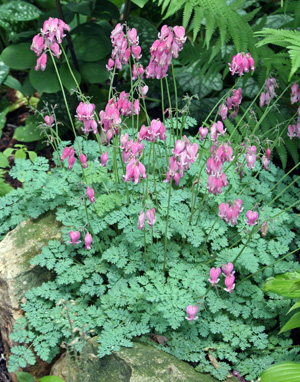
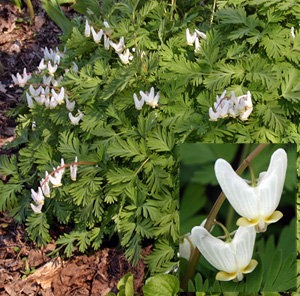
Bleeding Heart Cultivars & Related Species
There are a few cultivars of bleeding heart including:
- ‘Alba’ – with white flowers comes true from seed. This cultivar seems to tolerate summer heat better than the normal pink type but is not as vigorous a plant.
- ‘Gold Heart’ – with bright golden-green leaves.
- VALENTINE® (variety ‘Hordival’, USPP 22739) – features dark purple stems, deep green foliage, and red and white flowers.
Other species of Dicentra often grown as ornamentals include: D. exima, eastern or fringed bleeding heart, a zone 3 hardy species native to eastern North America, which grows only about a foot tall, with more finely divided leaves and smaller flowers; and D. formosa, western or Pacific bleeding heart, a northwest U.S. woodland native more suited to the climate there than in the Midwest. Both of these have a longer blooming season and retain their leaves through the growing season. In addition, ‘Luxuriant’ is a zone 3 hardy, compact selection thought to be a hybrid of D. exima and D. formosa. ‘Luxuriant’ grows 12 to 18 inches tall and wide and has persistent, grey-green foliage and pink flowers.
D. canadensis (squirrel corn, zone 4 hardy) and D. cucullaria (Dutchman’s breeches, zone 3 hardy), are Wisconsin native species with compact habits and white to yellow flowers. They are suitable for woodland gardens and shaded border locations.
Propagating Bleeding Heart
Bleeding heart is propagated by division in late fall or very early spring, or from fresh seed. Seeds are slow to germinate and require cold, moist stratification. Self-seeded plants will bloom in 2-3 years if not disturbed (transplanting may delay flowering for another year or more, although plants can be moved easily).
– Susan Mahr, University of Wisconsin – Madison
Last Update: Bruce Spangenberg, UW-Madison Extension, 2025


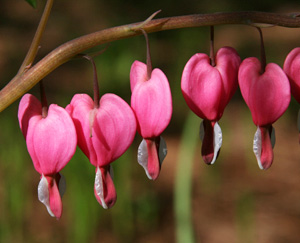
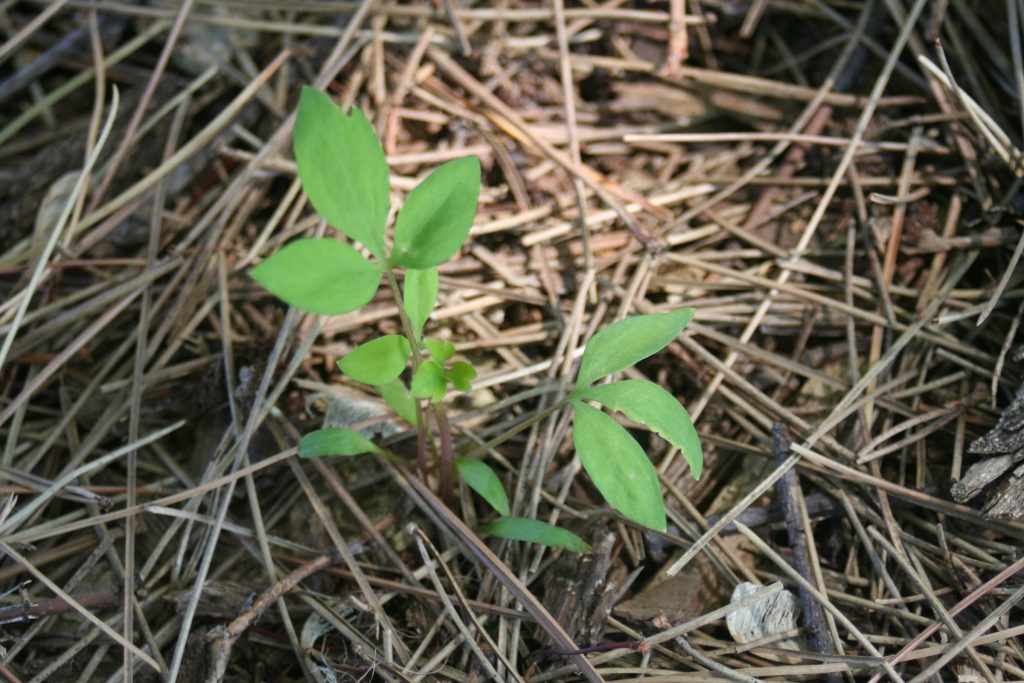





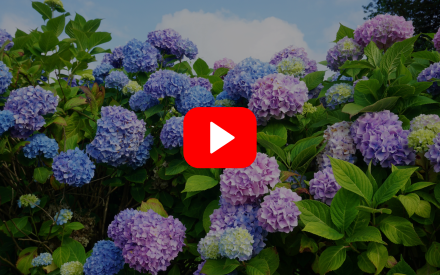 ▶︎ Watch: Hydrangeas: Know Them and Grow Them
▶︎ Watch: Hydrangeas: Know Them and Grow Them ▶︎ Watch: Fall Bulb Planting
▶︎ Watch: Fall Bulb Planting Aster, Symphyotrichum spp.
Aster, Symphyotrichum spp. Fascinating Fasciation
Fascinating Fasciation


